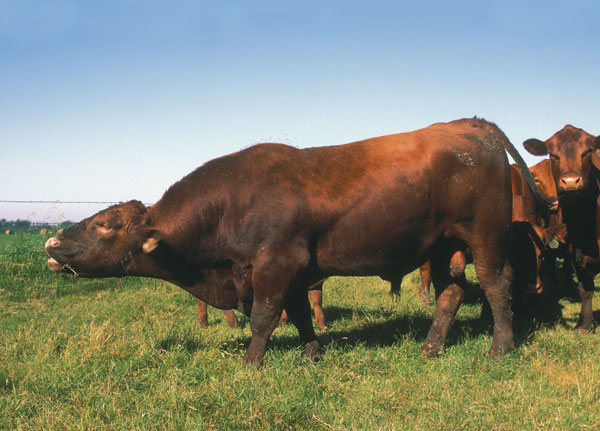May 3, 2021

Often, by the time a cattle producer recognizes they have a “trich” problem, significant economic loss has already occurred.The first signs of an issue are often discovered during pregnancy checking when there is an increased and unexpected number of short bred or open females.The most effective way to prevent this loss and shore up herd health is to implement biosecurity measures to prevent disease introduction.
Trichomoniasis is a reproductive disease caused by a protozoan called Tritrichomonas foetus. Bulls are asymptomatic carriers of the disease, but play the major role in trichomoniasis transmission. Older bulls are more at risk of having the disease than younger bulls.Unfortunately, positive bulls must be removed from the herd and either castrated or sent to slaughter as there is no treatment for the disease.
Infection in cows and heifers results in infertility and abortions, typically within the first four months of pregnancy. Although females can maintain long term infection, most clear the infection in four to five months. However, any protection acquired following exposure is very short-lived, and females are susceptible to reinfection again the following year.
A vaccination does exist for the disease, but does not prevent infection. In infected herds, the vaccine may reduce the number of abortions and length of infection in females.
The first step in prevention is to conduct annual trichomoniasis tests as part of a breeding soundness exam. When considering new bulls, ensure that bulls have either never been exposed to females or have a negative test conducted within the past 60 days. Replacement females should also come from negative herds.
Along with standard biosecurity practices, another way to improve herd health is through the use of a defined breeding season and adequate fencing.
In Oklahoma, testing is available from the Oklahoma Animal Disease Diagnostic Laboratory in Stillwater. ODAFF approved veterinarians may submit samples, and the test is performed each weekday. Test turnaround time is usually one to three days on individual or pooled samples. OADDL offers pooling of samples and UPS shipping options to help reduce the cost to producers. For more information visit Oklahoma Animal Disease Diagnostic Laboratory | College of Veterinary Medicine | Oklahoma State University (okstate.edu)
Dr. Barry Whitworth on Sunup TV “Vet Scripts” says producers should have bulls checked following February’s extreme freeze. Vet Scripts 5/1/21 — SUNUP TV (okstate.edu)
Source:Oklahoma State University, which is solely responsible for the information provided and is wholly owned by the source. Informa Business Media and all its subsidiaries are not responsible for any of the content contained in this information asset.
You May Also Like




